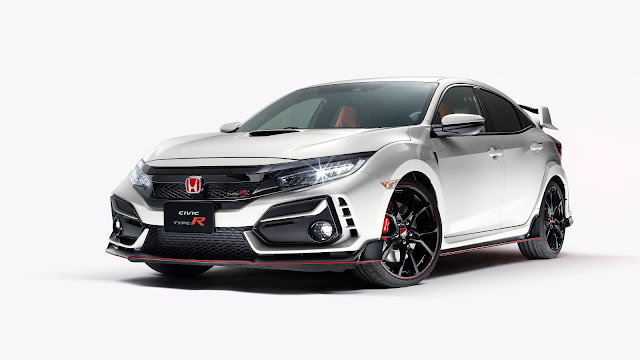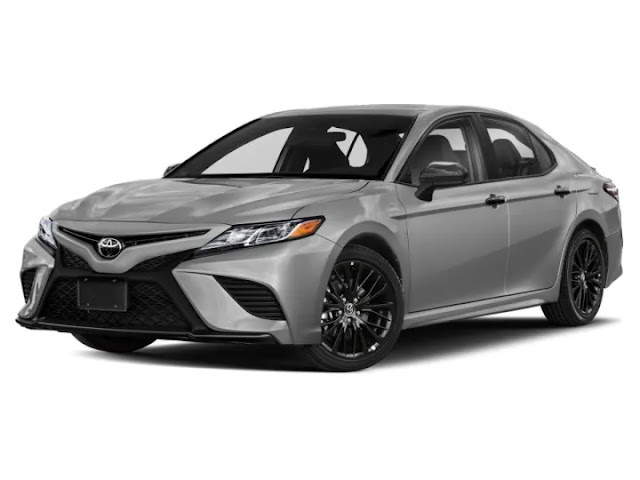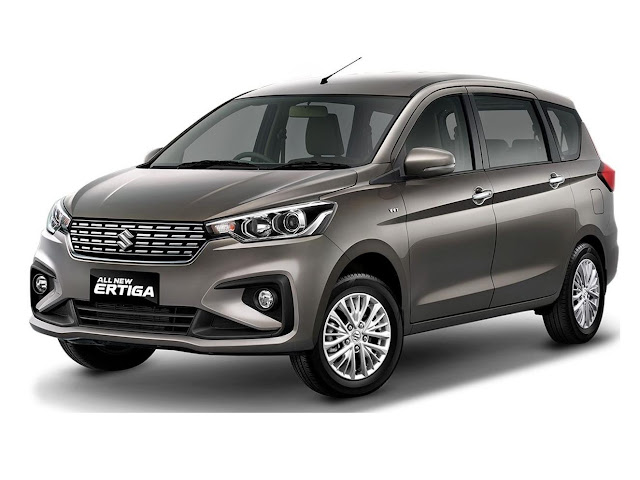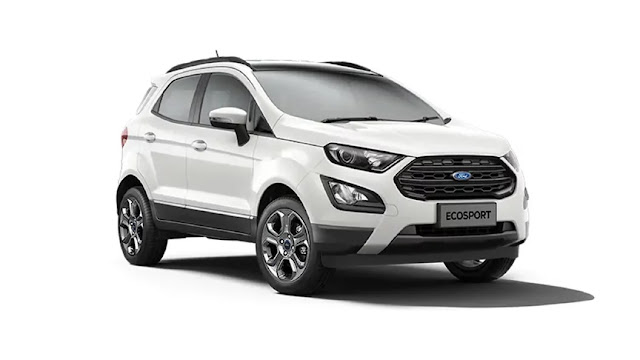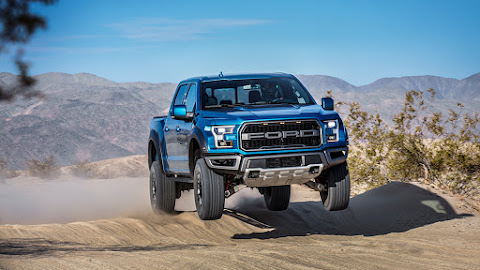Most of you might have or might not have read about the
article on different types of bikes we recently posted. It might be repetitive
to do all that again as we did for the bikes. Just like bikes each and every
type of car is designed and moulded to do the specific task appropriately. Even
the power and engine size are decided based on the cars as well as the weight
and shape are well defined for the purpose for which it is made.
In the case of cars, the things which affect its purpose are
body shape, ride height, the position of the engine where the powers are sent,
the weight of the car, and materials used. In each type, you will find a car
with different power distribution AWD, RWD, 4WD, & FWD.
Every difference in a car’s structure changes its purpose
and ability like the bike. The types of cars we see in our daily life are of
various kinds and we can easily recognize the variety and purpose and ability
of the car like, a hatchback is for city ride and maybe minimal off-roading, an
SUV for of course sports utility and packing things and going long distances. A
compact SUV for those who want a small vehicle but still needs an SUV. And some want a MUV, now that’s getting complex. A luxury sedan for
going to parties and impressing your girlfriends, well in case of impressing
your girl a supercar will do its work. Now you know the reason why rich people
have a variety of cars in their garage, yes, they want it all and do all(no pun
intended).
The differences in car types are very thin and confusing for
amateurs, well sometimes for car lovers also. The varieties will be more and tough
to differentiate from bikes. Over the years, the brands have customized and
upgraded the existing models to different categories to suit the individual
needs of customers. Now the classification has become more and more difficult
as the difference between two types is no more than an upgrade and its old
version. Let’s bring you the types of cars in the market and explain it in
simpler ways.
The Types
Micro-car / Bubble car
The micro-car is the name we use for the smallest size of
cars. Those cars have 3 or 4 wheels and often an engine smaller than
700cc. Specific types of micro-cars include bubble cars, quadricycles and voiturettes, cyclecars, and the Japanese equivalent is the Kei car.
They often gave micro-cars a relaxed regulations and licensing
than regular ones. Most micro-cars are powered by petrol or diesel engines,
however, but the new electric-powered micro-cars are in the market now.
Some examples of micro-cars for your reference are given
below:
1957 Heinkel Kabine bubble car
2012 Renault Twizy quadricycle
2015 Suzuki Alto Kei car
1959-1962 BMW Isetta
Hatchback
A hatchback is a car with a hatch-type back door that often
opens upwards & often a shared volume for the passenger and cargo areas.
Describing the body of a car as a hatchback refers to a utilitarian compact car (especially in the U.S.A);
however, these hatchbacks are actually used on SUVs, sports cars, and large luxury cars.
Compact hatchbacks are popular, and midsize liftbacks (a type of hatchbacks) relatively
popular in Europe. Hatchbacks are also popular throughout Asia and are the most
common body type for city cars and economy cars found in Asia.
The modern form of the hatchback body style was developed
through the 1960s and rose in popularity through the 1970s onwards.
-Mini compact
This segment is known as A-segment mini cars in the Euro car
segment, supermini in EURO NCAP. Other names are City cars and Kei cars.
Chevrolet Spark, Fiat 500 are some examples. In India Suzuki Alto is the best
example to give.
-Subcompact
Subcompact car is an American classification for cars which
is similar/equivalent to the B-segment (Europe)/supermini (Great Britain)
classifications, and smaller than a common compact car.
According to the Environmental Protection Agency (EPA) of
the USA, car size class definition, the subcompact category sits between mini
compact and compact categories. The EPA definition of a subcompact is a
passenger car with a combined interior & cargo volume of between 85–99
cubic feet (2,410–2,800 L). Present examples of subcompact cars are the Ford
Fiesta and Chevrolet Sonic. The smaller cars in the A-segment / city car
category (such as the Chevrolet Spark and Smart Fortwo) are sometimes called
subcompacts in the U.S. because of the EPA's name for this smaller category— mini
compact— is not commonly used by the general public.
Swift of Maruti Suzuki is an example of a compact hatchback in
India.
-Compact
Compact cars are predominantly used in North America and in
other countries as well — that sits between subcompact cars and mid-size cars.
The definition of a compact car is equivalent to the European C-segment or The British term "small family car". However, before the downsizing of
the United States car industry in the 1970s and 1980s, larger vehicles with
wheelbases up to 110 in (2.79 m) were considered "compact cars" in
the United States.
In Japan, a small size passenger vehicle has registered the category that sits between Kei cars and regular cars, based on overall size and
engine displacement limits.
India has its compact cars like Volkswagen Golf,
-Hot hatch
Hot hatch/Hot Hatchback is a high-performance version of a
mass-produced hatchback car.
The term became popular when in the mid-1980s factory
high-performance versions of hatchbacks were massively produced started in 1970
Front-mounted petrol engines, together with front-wheel drive is the most commonly seen powertrain layout, however, all-wheel drive has become more commonly used since around 2010. Most hot hatchbacks are produced in Europe or Asia.
Example Honda Civic type R
Sedan
A sedan, or saloon, is a passenger car in a three-box
configuration with separate compartments for engine, passenger, and cargo.
Sedan's first recorded use as a name for a car body was in
1912. The name comes from a 17th-century development of a litter, the sedan
chair, a one-person enclosed box with windows, and carried by porters.
-Compact
In terms of size, these are the smallest sedan you can find
in the market with most of the compact sedan that u will find will be related
to the hatchback with a bigger boot at the back
Ex VW Polo as a base for Vento
In this case, all the parts are the same as that of a
hatchback excluding the back of the car keeping the wheelbase or the distance
between the front and rear wheel the same.
By doing this you all get a good option to choose if you
want a lighter car for more fun or you want more space for the cargo of max 100
cu ft
-Midsize
When it comes to mid-size sedans they are bigger in every
dimension and cargo space/boot space can go up to 119 cu ft. These are not
related to any hatchback in any way. These are more comfortable and powerful
than the compact
Ex Toyota Camry
-Full size
These are the full-size sedan also called executive cars,
these have more space and are designed for comfort and a bit of power to
cruise at higher speed with lots of leg space for the rear seats. These are the
baseline for luxury cars.
Ex: Mercedes Benz E200d
Coupé
A coupé or coupe is a passenger car with a sloping/truncated
back roofline and usually 2 doors (several four-door cars can be seen on-road).
Coupé was first applied to horse-drawn carriages for two
passengers without rear-facing seats. The term coupé comes from the French
translation of "cut"
Luxury saloon / Full-size luxury sedan
Luxury cars are also known in Great Britain as a luxury saloon
or the luxury limousine and are known in the United States as a full-size
luxury sedan, large luxury sedan, or flagship sedan. It is the equivalent of the
European F-segment and German Oberklasse segment.
Many of these luxury saloons are the flagship for the marque
& therefore include the newest automotive technology. Several models are
available in long-wheelbase versions, which provide additional back seat
legroom & often a higher level of standard features.
Examples of luxury saloons/ full-size luxury sedans are BMW
7 Series, Cadillac CT6 Genesis G90, Mercedes-Benz S-Class, Lexus LS, and
Porsche Panamera and Mercedes Maybach
Sports Sedan
A sports sedan is also known as "sports saloon"
which is a subjective term for a sedan/saloon car which is designed to have the sporting performance or handling characteristics?
The term "sport sedan" was originally used in
North America for luxury import sedans (i.e. BMW, Audi, and Mercedes-Benz).
These cars have a higher priority to handling than the domestic luxury sedans
(i.e. Cadillac and Lincoln), which were more focused on comfort. However, since
the 2000s, the domestic brands have begun producing sports sedan models such as
the Cadillac CTS and Lincoln LS.
Another term sometimes used to describe sports sedans in The US is a muscle car, but that normally relates to V8-powered two-door coupe
American cars.
Ex BMW M5
Estate / wagon
A station wagon, also known as an estate car, estate or wagon,
is a car body style which has a 2-box design, a large cargo area, and a back
tailgate that is hinged to open for access to the cargo area. The body style is
similar to a hatchback car, but station wagons are longer and are more likely
to have the roof-line extended to the rear of the vehicle body (resulting in a
vertical rear surface to the car) to provide ample space for luggage
& small cargo.
The first station wagons, produced in the U.S around 1910,
were wood-bodied conversions of an existing passenger car. During the 1930s,
car producers in the United States, U.K, and France began to produce
similarly-styled models, and by the 1950s the wood rear bodywork had been
replaced by an all-steel body. Station wagon and estate models sold very well
from the 1950s to the 1970s, after which sales declined somewhat as minivans
and SUVs have increased in popularity.
MPV / Minivans
An MPV (Multi-Purpose Vehicle), or people carrier, is
typically a large hatchback with seating for six or more. They are bigger and
more practical than regular hatchbacks like a Ford Focus but lack the
off-roading ability of an SUV like a Land Rover Discovery Sport. In general,
the cost between the price of a hatchback and an SUV. They are markedly
different from crossovers too, as MPVs typically offer more seats.
-Mini MPV is the smallest size of MPVs and the
vehicles are often built on the platforms of B-segment hatchback models that
have only space for 5.
Examples of Mini MPVs:
a.
Fiat 500L
b.
Honda Freed
c.
Ford B-Max
-Compact
Compact MPV is the middle size of MPVs. The Compact MPV size
class sits between the mini MPV and large MPV (minivan) size classes. They
offer more luggage space and more passenger room then the mini. Has seating for
7 but the last 2 seats have very little space to be there for a 6 ft adult so u
can either have 7 seats with close to no boot space or 5 seats and lots of boot
space.
Ex Suzuki Ertiga
-Large
The largest size of minivans is also referred to as 'Large
MPV' and became popular following the introduction of the 1984 Renault Espace
and Dodge Caravan. Since the 1990s, the smaller Compact MPV and Mini MPV sizes
of minivans have also become popular. If the term 'minivan' is used without
specifying a size, it usually refers to a Large MPV.
Ex- Mercedes V-Class
MPV
Sports car
A sports car is designed to emphasize performance, handling,
or thrill of driving. This category of cars originated in Europe in the early 1900s and is currently produced by many manufacturers around the world.
Definitions of sports cars often relate to how the car
design is optimized for dynamic performance and amazing power feel, without any
specific basic requirements; both a Triumph Spitfire and Ferrari 488 Pista can
be considered sports cars, despite vastly different levels of performance and
features. Broader definitions of sports cars include cars "in which the performance takes a front seat over carrying capacity", or that focuses on
the "thrill of driving" or are marketed "using the excitement of
speed and the glamour of the (race)track". However, other people have more
specific definitions, such as "must be a two-seater or a 2+2 seater"
or a car with 2 seats only.
In the UK, early recorded usage of the "sports
car" was in The Times newspaper in 1919. The first known use of the term
in the U.S was in 1928. Sports cars started to become popular during the 1920s.
The term was originally used for two-seat roadsters (cars without a fixed roof),
however, since the early 1970s, the term has also been used for cars with a
fixed roof.
Attributing the definition of 'sports car' to any type of
model can be controversial or the subject of debate among enthusiasts. Many
have often contributed their own ideas to put a definition to it but never a
fixed one was adopted. Insurance companies have also attempted to use
mathematical formulae to categorize sports cars, often charging more for
insurance due to the inherent risk of performance driving.
You can see no fixed distinction between sports cars and
other categories of performance cars, such as muscle cars and grand tourers,
with some cars being members of several categories.
The Porsche 911 is a classic example of a sports car that
comes to my mind when we talk about it.
Supercar
A supercar – also known as an exotic car – is a loosely
defined description of a certain high-performance street-legal sports car.
Since the beginning of 2000s or 2010s, the term hypercar has come into use for
the highest performing supercars.
In the U.S, muscle cars were often referred to as
"Supercars" during the 1960s.
The Lamborghini Miura, produced from 1966–1973, is often
said to be the first supercar. By the 1970s and 1980s, the term was in regular
use, if not precisely defined. One interpretation up until the 1990s was to use
it for mid-engine two-seat cars with at least eight cylinders (but typically a
V12 engine), a power output of at least 400 bhp (298 kW) and a top speed of at
least 180 mph (290 km/h).
Other interpretations state that "it must be very fast,
with sporting handling to match", "it should be sleek and
eye-catching" and its price should be "one in a rarefied atmosphere
of its own" or regard exclusivity (i.e. limited production volumes) as an
important characteristic. I told you, in the beginning, it is going to be more
complex than bikes!
Audi R8 can be a good example of a supercar.
Hypercar
The recent term for high-performance sports cars is
"hypercar", which is sometimes used to describe the highest
performing supercar(who decides that?). As per supercars, there is no known
fixed definition for what constitutes a hypercar. An attempt to define these is
"a limited-production, top-of-the-line supercar with a price of around or
more than US$1 million."(wow!)
Some people consider the 1993 McLaren F1 to be the first
hypercar, while others believe the 2005 Bugatti Veyron was the first hypercar.
Many recent hypercars use a hybrid drivetrain, a trend
started in 2013 by the McLaren P1, Porsche 918 Spyder, and LaFerrari.
Bugatti Chiron can be said as the hyper of hypercars(lol).
SUV (Sports Utility Vehicle)
Sport utility vehicle (SUV) is a category of motor vehicles
that is a marriage between elements of road-going passenger cars with features
from off-road vehicles, such as raised ground clearance and four-wheel drive.
There is no commonly agreed definition of an SUV Other than
a Big car with a 4X4 and big ground clearance and usage varies between
countries. Some definitions claim that SUVs must be built on a light-truck
chassis; however, broader definitions consider any vehicle with off-road design
features to be a Sports Utility Vehicle. A crossover SUV is defined as an SUV
built with a unibody construction (as per passenger cars), however, in many
cases, crossovers are simply referred to as SUVs. In some countries—such as the
U.S—SUVs have been classified as "light trucks", resulting in more lenient
regulations compared to passenger cars. Chevrolet Tahoe(large SUV) and
Volkswagen Tiguan (compact SUV) are some popular ones in previous years.
During the late 1990s and early 2000s, the popularity of
SUVs increased significantly, often at the expense of the popularity of large
sedans and station wagons. More recently, smaller SUVs, mid-size, and crossovers
have become very popular. SUVs are currently the world's largest automotive
segment and accounted for 36.8% of the world's passenger car market in 2017. A
Land Rover Defender can be a modern-day example of an SUV.
Off-Road vehicle
When we talk about off-road vehicles we remember those ones
which are capable of driving on and off paved or gravel surfaces. It is
generally considered having large tires with deep, open treads, a flexible
suspension, or even caterpillar tracks. Other vehicles that do not travel
public streets or highways are generally termed off-highway vehicles, including
forklifts, cranes, tractors, backhoes, bulldozers, and golf carts.
These kinds of vehicles have an enthusiastic following
because of their versatility. Several types of motorsports involve racing
off-road vehicles. The most common use of these vehicles is for sightseeing in
areas distant from pavement. The use of higher clearance and higher traction
vehicles enables access on trails & forest roads that have rough and low
traction surfaces.
Crossover
The crossover, also known as CUV (crossover utility
vehicle)—is a type of vehicle with unibody construction. These are often based
on a platform shared with a passenger car; compared to truck-based SUVs, they
typically have a superior fuel economy, better interior comfort, a more
comfortable ride, but lower off-road capability. Poor off-road capability is
compounded by many crossovers being sold without all-wheel drive, which
challenges their definition as "SUV"
This is what actually crossover should be, but companies
either lift up a hath back to a crossover or make a bigger hatchback with
higher ground clearance and names it a compact SUV which is just a crossover
with close to no special off-roading capabilities.
However, there are various inconsistencies about whether
some vehicles are "CUV" or SUVs; therefore, the term "SUV"
is often used as a catch-all for both crossovers and compact SUVs.
In the U.S as of 2006, crossover models comprised more than
50% of the overall SUV market. Crossovers have also become increasingly popular
in Europe since the early 2010s.
Predecessors of the modern crossover include the 1977 Matra
Rancho and AMC Eagle introduced in 1979. And the example of the Indian market
is Ford Ecosport.
Crossover SUV
These are still called SUV, but unlike normal SUV which
has technology and hardware to support it to take it off-roading. These 4X4
SUVs are designed to perform better on-road then to take you off-road as most
or maximum of SUVs that are bought by people never see a day of off-roading in
their life. These SUVs are perfect for them as they behave much better on-road
and the traditional SUV is more comfortable and luxurious, and still can take
you to mild rough places.
EX dodge Cherokee Srt
Grand tourer
The grand tourer is a kind of sports-car that is made for
high-speed & long-distance tours, because of the combination of performance
& luxury attributes. The most popular format is the front-engine,
rear-wheel-drive 2-door coupé with either a 2-seat or a 2+2 arrangement. GTS
is most often the coupé derivative of a luxury sedan.
The term is a near-calque from the Italian phrase gran
Turismo that became popular in the English language in the 1950s, evolving from
fast-touring cars & streamlined closed sports cars during the 1930s.
A typical GT should exhibit the following characteristics:
-The engines should be able to cope with cruising
comfortably at the upper limits on all continental roads without any difficulty
or loss of excessive power.
-The GT car should have been devised by its progenitors as a
Grand Tourer, with all associated considerations kept in mind."
-It should be able to transport at least 2 in comfort with
their baggage and have room to spare — probably in the form of a (2+2) seating
arrangement.
-The design, both inside and out, should be geared toward
complete control by the driver only.
-Its chassis & suspension provide suitable handling
& road holding on all routes during long travels.
-And last if it's taken on a race track it should not
embarrass itself by not performing.
Ex: Bentley continental gt
Track day cars
These are Special Type of Cars, these are there for just one
purpose to have only fun no comfort no conversation on looks just performance.
These can be a bonus to look at as it is fun to drive these are made for those
who like to go on a race track on weekends. These are best cars who are just
looking for the driving pleasure and performance, these are super light-weight
cars with enough things to make it street legal.
Ex: Ariel Atom
Pickup Trucks
A pickup truck/ pickup is considered as a light truck having
an enclosed cab & an open cargo area with low sides and tailgate. In
Australia & New Zealand, both pickups and coupé utilities are called utes, a short form of a utility vehicle.
Once a work tool with few creatures comforts, in the 1950s
U.S consumers began purchasing pickups for lifestyle reasons, & by The 1990s, less than fifteen per cent of owners reported use in work/business as the
pickup truck's primary purpose. Today in North America, the pickup is mostly
used as a passenger car & accounts for about eighteen per cent of total
vehicles sold in the U.S.
Ex: Ford Raptor
All these different shapes and sizes are there for a purpose
and the parts that go in and the engine is there to help it do the task it is
meant to do. Buying a car should not be like, ok I have 6 Lakhs, let’s buy a
hatchback, ok I now have 20 lakhs let’s get a Compact SUV.
Don't buy a Mini hatchback or Sports or Supercar or Hypercar
to take it for a 1000km road trip; it is not meant for that. Don't You should
look at your needs, your driving style, your family size etc., and not what
everyone is going for. You might buy something as good as your
neighbour’s but, you might regret it.
What you like doesn’t have to be what you actually need.
Buying a car is never that simple as it is not cheap,
second, the resale value drops every day and the third reason is, you need to
maintain it.
There is a saying that I read once I don't remember who
wrote/said that, but I think it's true. The quote goes like this,
"if you don't look back at your car after you leave it after parking it,
you have bought the wrong one'.
You should take your time to test drive it, ask for
suggestions, but not to take those suggestions as the final answer, especially
when it is your first car.
We are happy to help you with doubts regarding automobiles,
feel free to contact us through email.





